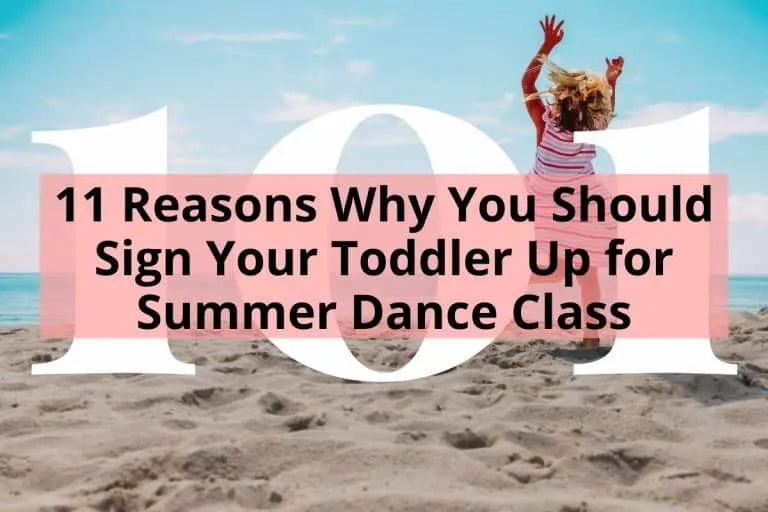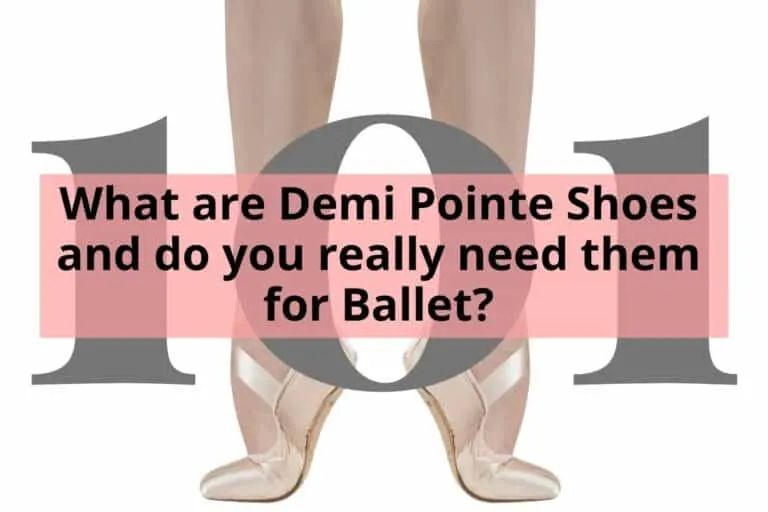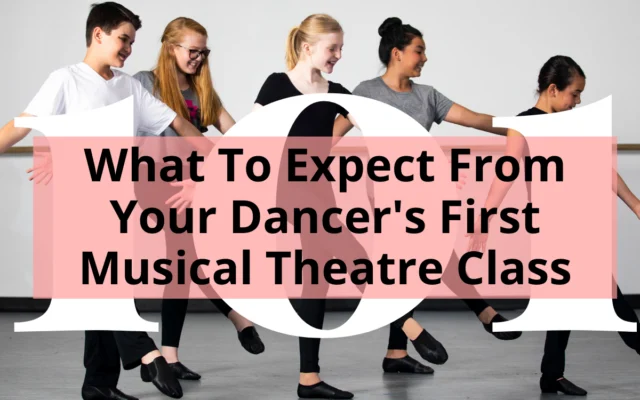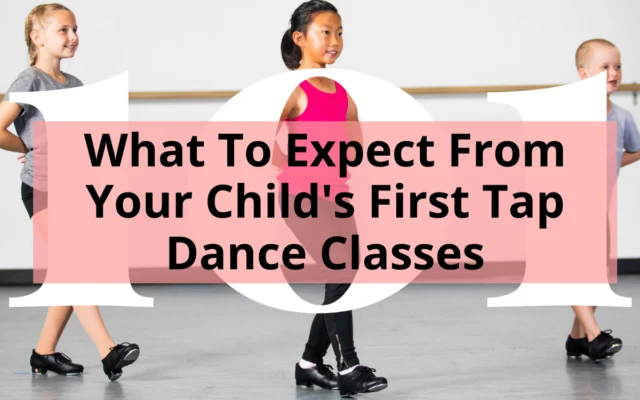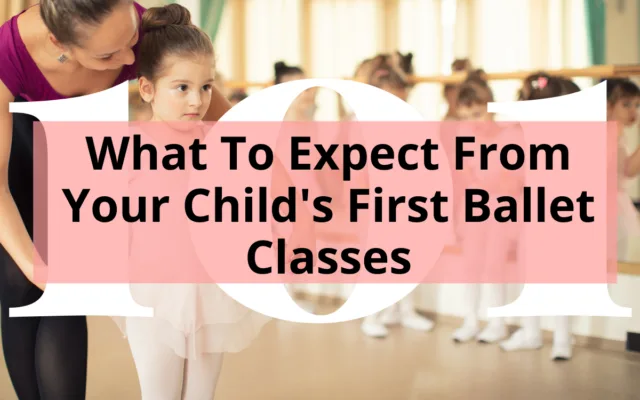By Samantha Bellerose, B.Ed, Dip.Dance (Performing Arts)
As a seasoned dance parent with two daughters that have been dancing since they were young, there have been so many things that I learned about navigating the dance world with my children but I picked up this information while my children progressed in dance.
There are many rules, tips, and expectations of dance parents that start as soon as your toddler begins their dance journey. It is important for dance parents to be prepared so there is less stress and younger dancers are supported on this journey.

I wish there were tips that I knew before we started this journey and what information I would have benefitted from if I knew from the beginning.
- What Style of Dance Should My Child Start with?
- Is There Any Adult Participation Involved in My Child’s Dance Lessons?
- Save and Keep All Paperwork and Schedules
- What Costs and Fees Should I be Aware Of for Dance Lessons?
- What Type of Time Commitment Am I Looking At?
- What Will My Child Wear? Is there a Uniform?
- Masks, Water Bottles and Other Items
- What should I expect to happen in their first dance classes?
- What Should I Do When My Child is in their Lesson?
- How Will I Know What is Going On At the Dance School?
- Will My Child Dance in a Recital or Concert
- Lastly – One Quick Dance Secret
What Style of Dance Should My Child Start with?
As an introduction to dance for young children, most studios offer ballet or creative movement based on the principles of ballet for their youngest dancers.
Dance teachers around the world consider ballet to be the foundation of a solid dance program.
Many dance schools also offer combination or ‘Combo’ classes – where your child spends the first half of their lesson learning ballet and the second half learning either jazz or tap dance.
Classes specifically in tap, jazz, hip hop, and other styles are generally offered to school-aged children. Therefore most students that begin between 18 months and 5 years old will be in ballet, a half/half class, or a creative movement lesson.
For more information about the different types of dance your child can learn and try check out our article Which kids dance class or style should I choose for my beginning dancer? or even take a browse and read through the descriptions in our alphabetical list of dance styles here!
Is There Any Adult Participation Involved in My Child’s Dance Lessons?
When dancers are extremely young, 18 months to 3 years old, many of the dance classes require parent participation. For many classes that allow 18-month-olds, parents need to be prepared to be in the studio and model the movements of the teacher to encourage their child to participate.
Parents are also required to help with managing their child’s emotions or remove them temporarily if their behavior is interfering with the class.
If your child is two to three years old or older, parents may be restricted from the studio or will have a chance to watch through a window or a monitor.
Every dance school is different and requires varying levels of parent participation in the studio during instruction time. Make sure that you are aware of the protocol so that you are prepared for the first day of class.
Also, because of COVID, most parents are not allowed to wait inside of the studio. Make sure you are aware of the rules and plan accordingly.
TOP TIP
Parents that are invited into the studio usually do not need to wear special shoes, but clean socks may be required. Check with your studio about what parents are able to wear on the dance floor.
Save and Keep All Paperwork and Schedules
At registration, you will receive a lot of paperwork or dense emails explaining the studio’s rules and procedures. Make sure that you are aware of everything and that your dancer also understands how they will need to behave in the studio.
Rarely is this a requirement of the parents of younger dancers, but you may also be asked to sign a code of conduct contract or a statement requesting that you only dance for one studio.
What Costs and Fees Should I be Aware Of for Dance Lessons?

All dance studios will charge different fees and you can take a look at what you can expect to pay in our article How much do dance classes cost? We compare 50+ schools across the US!. You can also take a look at our article The Cost of Kids Dance Lessons – A Guide for First Time Parents
DANCE TUITION
Depending on the studio, you may need to pay the entire fee for a whole term or series of ballet classes in advance at the time of registration or you may be charged monthly tuition.
REGISTRATION FEES
There will also be a registration fee per dancer to pay for administration costs in addition to the price of the class.
RECITAL & COSTUME FEES
If your child will be participating in an end-of-season recital, your dance studio will also charge separate fees for their participation.
Most studios will invoice you for either a new costume or costume rental. They may also have a separate fee that helps them cover the costs of extra rehearsals and if performing in a theatre venue and staffing costs.
You may also find you need to pay extra for a DVD, photos, a trophy/medal, or recital t-shirt – but some studios include these items in their overall recital package fee.
SHOES & UNIFORM
I discuss uniforms a little later in the article but you may need to budget for a studio uniform as well. At the very least you will need to buy specific clothes for dance such as ballet or other dance shoes and dancewear such as tights and leotards so it is good to be aware of these costs as well!
Remember to read all the paperwork we previously wrote about as this gives you more information about your fees and costs as well as things like their policy on missed classes and whether they allow make-up classes.
What Type of Time Commitment Am I Looking At?
With young dancers, there is not a major time commitment to participate. Classes are offered once or twice a week and often at convenient times – during the day or after preschool hours. These classes are often held earlier in the day when the studio is quiet and there are fewer older dancers running from one class to the next.
Most dance classes for the younger children are broken down into quarters or semesters throughout the year.
For older, school-aged dancers, there is often a commitment to enroll for the entire season, which in many cases is a 10-month period. Not all schools do this – but it is important to check this when you enroll!
As your child grows and wants to continue dancing, there will be more possibilities to add additional types of dance into their schedule. In this case, the amount of time at the studio for classes, including rehearsals and performances, will increase substantially. This in turn means a lot of chauffeuring them to and from class on your end – so it is important to understand this in the beginning!!! AND If they then get into competitions say goodbye to many of your weekends as you attend more classes, rehearsals, competitions, and conventions!
TOP TIP
In the beginning your time commitment is small. If your child falls in love with dance – assume that this commitment will increase year by year – as well as the costs!
What Will My Child Wear? Is there a Uniform?
Most dance studios are relaxed about uniform requirements for toddlers. There tends to be a recommendation for typical dancewear including tights and ballet shoes. However, this tends to be the time for children to pick their outfits as long as it is something comfortable that they can move in. You can check out our recommendations in our article What do toddlers wear to a dance or ballet class?
Leotards, tights, and ballet shoes are the standard but colorful tutus are always fun to dance in. Make sure, if you don’t have a studio-mandated uniform for this age, that the tutu is appropriate for the child’s size and they can easily move in it.
If your child decides to continue to dance, most dance studios require a specific uniform – often a special color leotard and tights in addition to their dance shoes. The uniforms may be required as early as three years old.
Masks, Water Bottles and Other Items

With COVID protocols currently in place around the world, most studios are requiring dancers to wear masks. Consider spending some time to find the best brand that can withstand the constant movement of your dancer.
WATER & SNACKS
In terms of water bottles, purchase the largest bottle your child can hold in case there is not a refill foundation at the studio. Also, consider finding a water bottle with a long straw. Many studios are asking parents to buy bottles for their children that they can drink from them without removing their masks.
Usually, dance studios only allow water in bottles in case of a spill. Water is also the healthiest and best option, especially during and after their dance class.
Many dance studios do not allow snacks or they have a restricted area where dancers can eat. Check the snack rules of the studio but always have a healthy snack and extra water ready for your child after class. Dancing always works up an appetite.
DANCE BAG
A good bag to hold all your dancer’s belongings in is also a good idea. When they first begin, you may choose to use any bag you have handy. But as they continue with their lessons you may want to have a bag that is specifically for your child’s dance items.
This way they always know where their dance shoes are and other items they need for class are and where they should be putting them back after use. You can take a look at some dance bags we like here at Dance Parent 101 on our resource page here!
What should I expect to happen in their first dance classes?
What happens in a dance class will usually depend on the type of dance they are studying. The following articles are a guide to what to expect in a dance class in the most popular styles taken today.
What To Expect From Your Child’s First Classical Ballet Classes
What To Expect From Your Child’s First Tap Dance Classes
What To Expect From Your Child’s First Jazz Class
What to Expect From Your Child’s First Hip Hop Dance Class
What To Expect From Your Dancer’s First Musical Theatre Class
What To Expect From Your Child’s First Lyrical Dance Class
What Should I Do When My Child is in their Lesson?
Any veteran dance parent can attest to the enormous amount of waiting that happens when your child is a dancer!
Some of us are lucky and have a shopping area or walkable neighborhood close to the studio to take care of shopping or jog a few miles for exercise. Or you may live a long distance from the studio which makes it difficult to leave.
The best thing to do is be prepared. Yes, your child needs their uniform, their shoes, a water bottle, and a snack, but you also have things that you need. Make sure you have enough to keep you occupied: magazines, books, a fully charged phone, running shoes, your laptop, and snacks.
I have grown to relish my hours of quiet while I wait for my dancers. I usually spend my time in my car listening to a new audiobook or finishing another lesson from an online course I have bought.
When the weather is nice, I walk the neighborhood with another dance parent or go for a run. Whatever you are into, enjoy your time!
TOP TIP
Think about what you will be doing during your child’s lesson and plan or pack accordingly! Get yourself ready and organized for dance class – not just your child!
How Will I Know What is Going On At the Dance School?
It is important to make sure that you thoroughly read all of the communication from your dance studio.
Their weekly or monthly newsletters will help you keep track of important dates and potential changes in the schedule. Or alternatively, they may use an app that has been specifically created for groups to use and communicate such as Team App.
Many instructors will send home weekly reports or even video snapshots about what was covered in class, but do not expect much of this until your dancer is older!
However, with so many COVID protocols in place, it may be useful to have an email address for direct communication with your child’s dance teacher. This way you can inform them in the event of your child’s absence or they can send you pictures of your dancer in case the studio does not allow parents inside.
Keep in mind that every studio may have restrictions or rules to regulate the communication between parents and teachers. Some studios will have a member of the studio’s administration handle all communication others will be in direct contact with the teacher.
TOP TIP
Make sure you are aware of your studio’s rules and communication methods – they may use an app, email newsletters or only answer questions during certain hours of business!
Will My Child Dance in a Recital or Concert

Recital season is a busy time at a dance studio and an exciting period for dancers! This may be your child’s first time on stage in front of an audience and wearing a special costume to perform. There will be so many new things that they will experience during this time.
Recital fees are almost always an additional fee if you are not charged for it at the time of enrollment.
The fee involves money for paying wages – teachers spend a lot of time preparing out of class as well as their time at rehearsals and on recital day, it may also cover some costs for the venue hire, a lighting technician and other costs such as a t-shirt, medal or trophy for your child.
Recital fees – especially costume fees need to be paid on time!!! This is because your teacher or studio is paying contractors or even costume makers and suppliers who have deadlines. So it is important to budget for these costs especially if your studio doesn’t divide them into monthly or term fees. I personally chatted online with one distraught mother asking for advice when she was unable to pay a fee she had not budgeted for and whose daughter missed out on the end-of-year recital!
Many studios will require parents to pay for the recital costume and for the tickets to the performance but every studio varies. Make sure to know in advance as you do not want to miss the show!
There will also be a fitting and a cut-off time of enrollment for dancers to participate in the recital. This allows the studio to order appropriately sized costumes and gives dancers adequate time for lessons and practice.
Often additional classes are added to the schedule in the few weeks prior to the recital, including dress rehearsals, so your patience and flexibility will be key during those weeks.
TOP TIP
There are usually cut off dates for paying costume, recital and other associated fees!
Lastly – One Quick Dance Secret
You will continue to pick up many dance secrets as your child dances but here is one now:
Purchase a bar of Dove soap and keep it in a soap case. Your young dancer will get smudges and dirt on their pink tights every time they wear them.
Rub the Dove soap directly on the stain, hand wash the tights, and hang them to dry. They will be as good as new.
Further Reading
What To Expect From Your Child’s First Jazz Class




